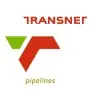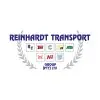
Train drivers are responsible for moving people and goods safely across the country. There are two main kinds of drivers: freight train drivers, who haul goods and cargo, and passenger (commuter) train drivers, who transport people. Both roles carry heavy responsibility – for example, commuter drivers “have a major responsibility to their communities, as the lives of commuters are placed in their hands on a daily basis. Drivers must be very safe, focused and able to make quick decisions. They inspect their trains and loads, follow strict safety and signal rules, and keep to tight schedules.
In short, train drivers operate locomotive controls, monitor gauges and brakes, communicate with control centers, and perform pre- and post-trip checks to keep trains running on time and without incidents.
Types of Employers
In South Africa, train drivers work for various employers:
- Passenger Rail Agency of South Africa (PRASA) – runs Metrorail (commuter trains in cities) and long-distance services like Shosholoza Meyl. PRASA is the main provider of public passenger rail in SA.
- Transnet Freight Rail (TFR) – a division of Transnet that runs most of the country’s freight rail network (coal, iron ore, other goods). TFR is the main freight employer for train drivers.
- Bombela Operating Company (Gautrain) – operates the Gautrain high-speed commuter service in Gauteng (Johannesburg–Pretoria). As Gautrain drivers, you would work for Bombela, a Gautrain subsidiary.
- Private and Heritage Lines – e.g. Rovos Rail (luxury tourist trains), Metrorail heritage operators, and other niche operators.
- Mining and Industrial Railways – large mines (like Kumba Iron Ore, Anglo American) and ports sometimes have their own trains. These employers hire “loco drivers” or train operators for internal ore and material transport.
Each employer has its own hiring process, but the core skills and requirements are similar across the industry.
Train Driver Vacancies
-

Graduate Program Vacancies at Transnet SOC Ltd
Transnet SOC LtdPretoria, Gauteng -

RSR Bursary Opportunity (1 Post)
Railway Safety Regulator (RSR)Gauteng -

Driver – Code 14 Job opportunity at SA Metal Group
SA Metal Group (Pty) Ltd.Secunda, Mpumalanga -

Sasol Locomotive Driver Vacancies
SasolSecunda, Mpumalanga -

CBRE Excellerate, Handyman Vacancy (X1 Post)
CBRE ExcellerateRoodepoort, Johannesburg -

Hollywoodbets Vacancies (1 Post)
HollywoodbetsDurban, KwaZulu-Natal -

Bidvest Tank Terminals Plant Operator Job | 2 Posts
Bidvest Tank TerminalsRichards Bay, KwaZulu-Natal -

Sasol Administrator SC Warehousing Vacancies
SasolDurban, KwaZulu-Natal -

Inventory Controller Job at Reinhardt
Reinhardt Transport GroupNigel, Gauteng -

Storeperson Job Opportunity at Alstom
AlstomPretoria, Gauteng -

General Worker Job at South African National Parks
South African National ParksGarden Route National Park, Eastern Cape -

Fidelity Services Group Kennel Assistant Vacancy
Fidelity Services GroupSecunda, Mpumalanga -

Starke Ayres Despatch Controller Vacancy
Starke Ayres (Pty) Ltd.Kempton Park, Gauteng
Entry Requirements and Qualifications
To become a train driver, you generally need:
- Education: A secondary school diploma (Matric) is essential. Employers usually require Maths and Physical Science subjects. A formal rail qualification (like a National Diploma in Train Driving, NQF Level 5) is often needed before or during training.
- Age: You must be at least 21 years old to work as a train driver or controller (this is a safety regulation).
- Health and Fitness: Good overall health is required. You must have clear vision and hearing, good reflexes and concentration, and pass medical and drug tests. Regular medical exams (including eyesight and hearing tests) are mandatory.
- Physical Requirements: You should be physically fit and able to sit or stand for long periods, work in all weathers, and sometimes handle heavy tools. Transnet’s trainee programs specify a minimum height (e.g. 1.60 m) and ability to lift heavy objects.
- Skills: Aptitude for mechanics and electronics, good communication, and strong attention to detail are important. Psychometric tests (like the Vienna Test System) are used to assess decision-making and coordination.
- Driver’s Licence: Some employers may require a valid heavy-vehicle driver’s licence (Code C1/C and PDP), especially for Gautrain or mining operations, though it’s not always mandatory.
- Background: A clean criminal record and the ability to pass security and background checks are usually required.
In summary, aspiring drivers should finish school with strong Maths/Science, stay physically healthy, and be willing to work unusual hours and shifts.
Application Process
Major employers use online portals and advertised processes:
- Transnet Freight Rail (TFR): Transnet posts trainee and driver vacancies on its careers portal. For example, the Train Assistant Traineeship is advertised with an online application link. You typically create an account on the Transnet Talent Portal and upload your CV, ID, and certificates. (Transnet’s sites like transnet.net or transnettalentportal.csod.com are the starting points.)
- PRASA/Metrorail: PRASA vacancies are listed on the PRASA careers page (www.prasa.com/careers). Applicants register, search for “Train Driver” jobs, and apply online. When PRASA or its divisions (Metrorail, Shosholoza Meyl) have openings, they will post them on the site. Steps include creating an online profile, filling the application form, and submitting required documents.
- Gautrain/Bombela: Gautrain driver positions are handled by Bombela Operating Company. Check the Bombela careers site (careers.bombelaop.com) or Gautrain’s official pages for vacancies. Applications will be online through Bombela’s portal.
- Mining and Private Rails: Large mining companies and private rail operators post vacancies on their own websites or in industry media. Applicants usually send CVs and certificates as instructed in the job ad.
In all cases, wait for official announcements (in newspapers, company websites or LinkedIn). Beware of job scams: you should never pay to apply or be interviewed.
Training
Once hired or accepted into a learnership, training is rigorous and thorough:
- Training Providers: The main training institution is Transnet’s Academy – Faculty of Rail (School of Rail). It has campuses in major centres (Kempton Park, Kimberley, Bloemfontein, Durban/Wentworth, Bellville, Pretoria, Germiston, Port Elizabeth). These campuses offer courses in Railway Operations, Signal & Safety, Permanent Way (track) maintenance, and more. PRASA has an academy as well, and Gautrain provides in-house training for its drivers. Private providers (e.g. R&H Railway) also offer accredited courses.
- What’s Covered: Training combines classroom theory and hands-on practical work. You learn about railway signalling rules, train handling, coupling and uncoupling, brake testing, safety regulations, route knowledge, radio communication, and locomotive systems. Much of the curriculum is based on SAQA-accredited unit standards. Practical training includes driving a locomotive on test tracks under supervision.
- Duration: Formal training programs often last several months to a year. Transnet’s structured Train Assistant program, for example, includes both theory and practical modules. (In practice, it can take over a year from starting training to being a qualified driver.)
- Assessment: Trainees must pass written exams (on rules and signals) and practical driving tests. Ultimately, the Railway Safety Regulator (RSR) issues a Driver Competence Certificate once you meet all requirements. This is similar to a “licence” to drive a train.
- Cost/Funding: Many training programs are sponsored. For example, Transnet’s learner programs are stipend-based, meaning you earn a training allowance during the course. This “earn-while-you-learn” model is common: you often get a modest salary or stipend as you complete training. (If you self-fund, costs can range in the hundreds of thousands, but most learners join company-sponsored programs.)
Training is demanding: you must excel in heavy regulations and tests. Successful completion and certification are required before taking command of a train.
Funding and Bursaries
Because training is specialized, various funding routes exist:
- Company Learnerships: As above, Transnet and PRASA often run learnerships or cadet programs that pay stipends during. These include the cost of training and pay the trainee. For example, Transnet’s trainee programs include on-the-job training with a salary.
- TETA Bursaries: The Transport Education and Training Authority (TETA) sometimes offers bursaries or learnerships in the rail sector for qualifying students. Keep an eye on the TETA website (www.teta.org.za) under bursaries and learnerships. These can cover tuition or training costs for approved programs.
- University/College Bursaries: PRASA occasionally offers bursaries for engineering and transport students. (For 2025, PRASA bursaries were open in fields like engineering.) See prasa.com or bursary portals for announcements. Transnet also awards bursaries in technical fields.
- TVET Colleges: Some technical colleges offer diplomas in rail or electrical engineering with subsidised fees. Completing a related qualification can improve your chances to enter training programs.
- Loans/NSFAS: If you enroll in a recognized rail training course at a university or college, you may qualify for NSFAS or private student loans.
Stay alert for internship or cadetship announcements (e.g. posted on company sites or career portals). As PRASA noted, companies are launching bursary and internship initiatives to “address the shortage of skills” and prepare the next generation of rail workers.
Daily Duties and Responsibilities
A train driver’s typical day might include:
- Pre-trip Checks: Inspect the locomotive and cars (or coaches) for safety: check brakes, couplings, fuel, oil, and train . Ensure the train is ready for service.
- Driving the Train: Operate controls (throttle, brakes, signals) to move the train. Maintain proper speed according to schedules and track limits. Follow all signals, speed restrictions, and safety rules. For freight trains, that means hauling heavy loads on long routes. For passenger trains, that means handling stops and starts at stations safely.
- Monitoring Systems: Watch pressure gauges, speedometers, and warning systems. Listen to train sounds. Call in any unusual issues. Conduct brake tests and report any faults.
- Communication: Stay in contact with rail traffic controllers or signal operators using radios or dispatch systems. Notify them of departures, arrivals, or problems. Obey their instructions.
- Documentation: Keep logbooks or electronic records of the journey – times, signals encountered, any delays or mechanical issues. Complete any required reports after trips.
- Safety & Emergencies: Be prepared to make emergency stops if needed. If there’s an incident (e.g. a fallen obstacle, a derailment risk), you must act quickly and follow emergency protocols.
In addition, drivers often work as a team: a freight train may have an assistant driver or crew, and on some passenger services there may be a conductor. Drivers also help shunt cars in yards or marshalling points. All duties must be done methodically – safety is the priority on every run.
Work Environment and Hours
Railway work is very different from a 9–5 office job. Some points to know:
- Shifts and Hours: Trains run early mornings, late nights, weekends and holidays. Drivers typically work in shifts that can vary week to week. Long-distance freight drivers may spend days away from home, resting in bunkers or rest areas provided on trains or at stations. Local commuter drivers may do day and night shifts in rotation. Expect irregular hours and be prepared for overtime. As one source notes, train drivers must be “willing to work long and unusual hours on local or national routes”.
- Workplace: Most of your working time is spent in the locomotive cab. Modern cabs are similar to cockpit environments – usually enclosed and climate-controlled, with a control console and chairs. They can be quiet, but you hear the engine and signals. In hot weather the cab can get warm, and in winter (especially on steam or older diesel units) it can be cold. When stopped, you may stand or walk along platforms or yard areas. Freight drivers may also climb on/off flatcars.
- Exposure: You’ll work outdoors at times (inspecting trains on sidings, etc.), and in varied weather. You might go through tunnels, bridges, industrial areas or remote countryside. Safety gear (vest, hat, boots) is worn on yards and stations.
- Team Environment: Even though driving can feel solitary, you’re part of a rail team. You’ll interact with co-drivers, dispatchers, station staff, shunters and maintenance crews. Good communication and teamwork are important for smooth operations.
Overall, be prepared for an unconventional schedule and a mix of independent work and team coordination. Proper rest and fitness are important due to the demands of shift work.
Career Progression
Railway careers offer several paths after becoming a driver:
- Senior Driver/Rank & Pay: With experience, drivers are classified into ranks (e.g. Assistant Driver → Driver → Senior Driver). Salaries increase with rank and experience. Senior drivers often mentor juniors.
- Trainer or Instructor: Experienced drivers can become driving instructors or examiners, training new recruits in simulators and on-track practice.
- Traffic/Operations Control: A driver may move into train control/dispatcher roles at a rail traffic control centre, managing routes and signals. These roles usually require additional testing/certification.
- Rail Management and Engineering: Drivers with further qualifications might shift to supervisory or technical roles – e.g. operations supervisor, safety manager, or into engineering/maintenance departments. Some study part-time in transport management or rail engineering.
- Specialist Roles: Some drivers specialize (e.g. only steam or only electric locomotives, or work in high-speed rail vs heavy freight). Others move into logistics planning or facility management (such as depot manager).
As one industry guide notes, trainees may start as Train Assistants and then “advance to Train Driver, Operations Supervisor, or Logistics Coordinator” roles. In South Africa’s rail sector, there is also promotion potential into national or international rail management jobs, especially for multilingual or highly qualified drivers. Continuous professional development (short courses, safety qualifications) can boost advancement.
Salaries and Benefits
Salaries vary by employer, experience and region, but are generally good for a skilled trade:
- Annual Pay: Train drivers earn roughly R150,000 to R500,000 per year. Entry-level drivers (freshly qualified) might start around R15,000–R20,000 per month (≈R180–240k/year), while very experienced drivers can reach over R40,000 per month (R480k+). On average, South African train drivers earn about R290,000–R370,000 per year (≈R24,000–31,000 per month). (For example, a salary study found an average of R372,592/yr and another source cited ~R290,000/yr.)
- Payment Frequency: Drivers are usually on monthly pay, with a 13th cheque (year-end bonus) common in many rail companies. Union contracts may set these terms.
- Overtime/Allowances: Working unsocial hours often means overtime or shift allowances. Some reviews note that Transnet drivers get overtime pay, and benefits like housing and medical allowances.
- Benefits: Large employers typically provide standard benefits – pension/provident fund, medical aid contributions, paid leave, and sometimes travel passes. For instance, many rail workers enjoy free travel on trains for themselves and family on off-duty times. Union-negotiated benefits can include things like reduced-cost education or housing loans.
In summary, train driving is a relatively well-paid, secure trade. The pay is comparable to other technical professions and often includes solid fringe benefits. Always check current union agreements (e.g. SACCAWU/SALADSA agreements) for the latest salary scales.
Tips for Aspiring Drivers
- Excel at School: Get strong marks in Mathematics and Physical Science in Matric. These subjects are almost always required. If you didn’t take them, consider a bridging course.
- Gain Experience: A driving license (Code C1/C) can show basic vehicle skills. If possible, work in transport/logistics roles (train assistant, railway operations, or even heavy truck driving) to build your CV.
- Stay Healthy: Maintain good fitness, vision, and hearing. The selection process includes rigorous medical exams and psychometric tests (like the Vienna Test). Practice concentration and simulate the conditions (e.g. sit quietly for long stretches).
- Learn About Rail: Familiarize yourself with South African rail (types of locomotives, basic signalling, safety rules). Read the “National Railway Safety Regulations” or take short courses if available. This shows employers your commitment.
- Apply Proactively: Regularly check Transnet and PRASA career portals for traineeships. Set job alerts on career sites for “train driver”. Attend rail career fairs (PRASA held nationwide career days) or open days at rail academies. Even if no jobs are open, submit CVs and call centers to express interest.
- Network: Join railway worker forums or social media groups. Talking to current drivers or union members can give tips on openings. Unions like the South African Locomotive Drivers Association (SALADSA) may provide guidance.
- Prepare for Interviews: Be ready to demonstrate responsibility, mechanical aptitude, and your interest in rail. In interviews or tests, emphasize safety awareness and your willingness to work shifts.
Persistence is key – rail is a specialized field with limited openings. Meanwhile, related roles (e.g. train assistant, locomotive mechanic, signalling technician) can be stepping stones. By building relevant skills and staying informed, you position yourself well when driver openings arise.
Useful Contacts and Websites
- PRASA (Passenger Rail Agency of SA): Main website www.prasa.com. Contact the PRASA Careers site for vacancies. General enquiries: +27 11 013 6700 (PRASA info line) or info@prasa.com.
- Transnet Freight Rail (TFR): Visit www.transnet.net and look for the Freight Rail (TFR) careers section. Transnet’s career portal is often at
transnettalentportal.csod.com(see Transnet job adverts). General enquiries: TFR switchboard +27 11 308 9000, or 0860 690 730 (company info line). - Gautrain (Bombela Operating Co.): Careers for Gautrain (Bombela) are on careers.bombelaop.com or www.gautrain.co.za.
- Railway Safety Regulator (RSR): The RSR oversees train driver certification. For safety rules or licensing questions visit www.rsr.org.za. The RSR hotline is 0800 444 888 (24/7)rsr.org.za.
- Transport Education and Training Authority (TETA): For funding info and learnerships, see www.teta.org.za. They administer bursaries for rail/transport studies.
- Recruitment Portals: Job portals like CareersPortal, CareerJunction, and industry forums often list learnerships (e.g. “Transnet Train Assistant”) and bursary announcements.
Always verify any contact info on official company websites. For detailed information about training courses, certification or funding, check official sources like the RSR, Transnet Academy, or PRASA’s career/bursary pages.
Where can i take a train drivers caurse am very serious and interested on that railway
Hi I am interested to be the part I am a fast learner who like to be the best of the team 8